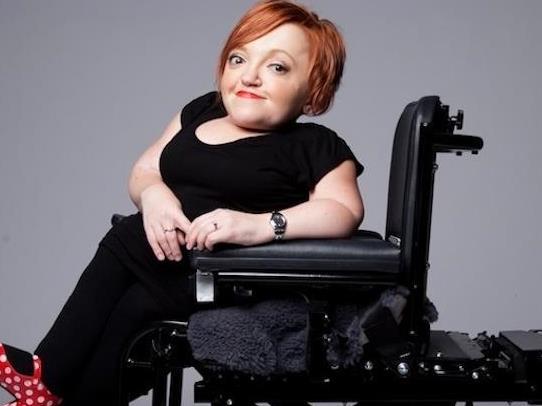Stella Young has three profile pics on her first Comedy Festival promo page. Two of them are over-staged: one a semi bird’s-eye shot of Young in a striped, figure-hugging dress, lounging casually on her wheelchair. It’s hot, but a little awkward. Young is hot, but she’s not awkward.
The second is a profile shot, showing more of her chair. It looks like a primary school photo. The third is a wider angle of the same shot. The chair, in all its electronic blackness, strikes an imposing figure, taking up three quarters of the shot. And yet it’s Young that dominates the picture.
Three quarters of Young’s show, Tales From the Crip, is about disability and life with it, but again it’s Young, rather than her subject, that dominates the set. She’s bloody funny.
Young’s machine rolls out at a million miles an hour, and she deftly manoeuvres around to face us with the causal intensity that will rule her show. Yes, she’s casual – but the kind that dopes the audience up just enough so that they don’t notice the jibes and daggers. Most of us are able-bodied. She’s hilariously devastating, and from the first moment Young manages to place the ‘norms’ in the audience in a tight, constrictive box of the Other, most of us suddenly recognising, and perhaps getting a small taste of, the sting of the treatment she and other disabled people get their whole lives. It’s an odd feeling, one that I haven’t experienced before. The observations are well-captured, dry, and withering. About five audience members are in wheelchairs at the front.
‘Everyone get here alright? Enough disabled spaces?’ She could make it preachy. She’s doesn’t.
Young leans heavily on her childhood for material, as well as the patronising ‘help’ she’s received from a clueless public in the past (endless fodder here); the supermarket; and her sex life. The performance suffers only mildly from a lack of polish.
Towards the end of the set, Young goes there.
‘So, my sex life. You’ve all been wondering,’ she jibes. We haven’t, actually – she’s been too entertaining. What follows is funny, but the least funny part of the show – the kind of sex stuff that’s a mainstay for comedians, but not that funny in and of itself. But it’s a thing about comedians, I guess. They all think we want to know.
Overall, Young’s work is a step up from her stuff at the Melbourne Museum in past years. She’s sharp, over-confident and devastating. Everything you want for a good night out at the Festival.
Rating: 4 out of 5 stars
Stella Young in Tales from the Crip
Northcote Town Hall, High St, Northcote
Melbourne International Comedy Festival
www.comedyfestival.com.au
27 March – 20 April






